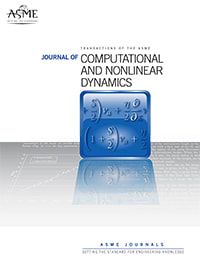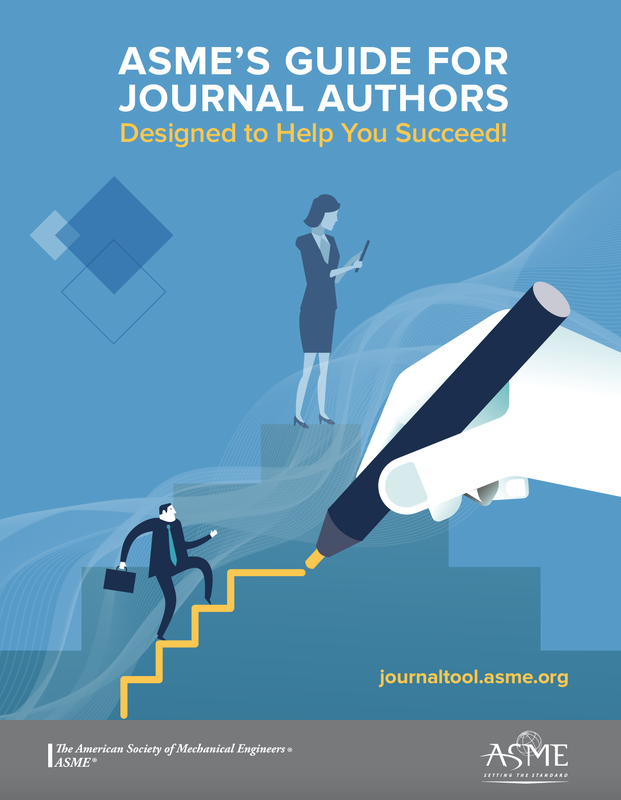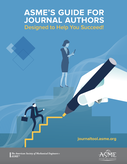|
Back to Blog
Guest EditorialOumar Barry, Pierpaolo Belardinelli, Teresa Berruti, and Radu Serban J. Comput. Nonlinear Dynam. Aug 2023, 18(8): 080301 https://doi.org/10.1115/1.4062725 We are delighted to bring to the readers of the ASME Journal of Computational and Nonlinear Dynamics (JCND) a special issue dedicated to select papers from the 18th International Conference on Multibody Systems, Nonlinear Dynamics, and Control (MSNDC), held during the 2022 ASME International Design Engineering Technical Conferences and Computers and Information in Engineering (IDETC-CIE) Conferences. In the last few years, it has become a tradition to collate such a Special Issue with some of the most interesting and relevant papers presented at MSNDC. At its 18th edition in 2022, MSNDC is the main conference in multibody dynamics and nonlinear control in the United States and provides an international venue where researchers and practitioners present an early glimpse into their highest-quality research and development. JCND was established in 2005, at the initiative of the ASME Technical Committee (TC-MSND) that is also organizing the annual MSNDC conferences. Under the steady and effective leadership of its past (Subhash C. Sinha, Ahmed Shabana, and Bala Balachandran) and current (Bogdan Epureanu) Editors-in-Chief, JCND has become a premier ASME journal which “serves as a forum for the exchange of new ideas and applications in computational dynamics, multibody system dynamics, and all aspects (analytical, numerical, and experimental) of dynamics associated with nonlinear systems.” It is in this spirit that we share with you some of the most exciting work presented at MSNDC-2022. Held as the first in-person meeting after the global Covid pandemic, the 2022 edition of the IDETC-CIE conferences took place in St. Louis, MS, August 14–17, 2022. With the world emerging from the constraints imposed by the pandemic and with travel safety and security limitations still in place, the IDETC-CIE conferences nonetheless managed to attract a relatively large number of submissions and participants. With this special issue we want to bring to the readership of JCND and to those colleagues of ours who were unable to attend the in-person conference some of the highlights of the MSNDC conference; furthermore, we hope to use this mechanism to remind the community at large of the ASME IDETC-CIE conferences and their continuing impact on the field over the years and encourage higher participation; finally, we aim to benefit JCND and its readership by presenting recent and innovative work in the core topics of the journal. Selected from the papers recommended by the conference paper reviewers and symposium organizers for the MSNDC Best Paper award, manuscripts considered for this special issue underwent the conference review process, an additional scoring for the MSNDC Best Paper competition, and finally the standard JCND review process. The twelve papers that comprise the final special issue cover a spectrum of topics central to both MSNDC and JCND. They present both theoretical and applied research, as well as both analytical and computational approaches to problems in diverse areas, ranging from frictional contact in nonlinear finite element analysis, to optimal control, nonlinear stability analysis, terramechanics, servo-controlled precision motion, swarm robotics, aerodynamic stability, and to nonlinear dynamics in atomic force microscopy. We are indeed very happy to have had the opportunity to organize this special issue. Special thanks to Prof. Bogdan I. Epureanu for giving us this opportunity and to Amy Suski for helping us greatly at every step of the process. It was great working as a team on this project and we are excited to see it come to life. Copyright © 2023 by ASME Research PapersA pnh-Adaptive Refinement Procedure for Numerical Optimal Control Problems
Lorenzo Bartali, Marco Gabiccini, Massimo Guiggiani Stability Analysis of Nonlinear Rotating Systems Using Lyapunov Characteristic Exponents Estimated From Multibody Dynamics Gianni Cassoni, Andrea Zanoni, Aykut Tamer, Pierangelo Masarati On Practical Aspects of Variational Consistency in Contact Dynamics Antonio Recuero, Alexander Lindsay Non-Smooth Dynamics of Tapping Mode Atomic Force Microscopy Pierpaolo Belardinelli, Abhilash Chandrashekar, Farbod Alijani, Stefano Lenci Stability and Bifurcation Analysis of Precision Motion Stage With Nonlinear Friction Isolator Sunit K. Gupta, Ehab E. Basta, Oumar R. Barry Vibration Analysis of a Nonlinear Absorber Coupled to a Hand-Held Impact Machine Oreoluwa Alabi, Sunit Kumar Gupta, Oumar R. Barry Real-Time Simulation of Ground Vehicles on Deformable Terrain Radu Serban, Jay Taves, Zhenhao Zhou Period-1 Motions to Twin Spiral Homoclinic Orbits in the Rössler System Siyuan Xing, Albert C. J. Luo Identification of Asymmetric Bouc–Wen Hysteresis Under Intense Noise by Only Measuring Acceleration Qinghua Liu, Junyi Cao Evaluation and Modification of Kinetic Gas Collision Theory as Applied to Encounter Rate Dynamics for Multi-Robot Groups and Robot Swarms Adam Schroeder, Glenn Lipscomb Stability Analysis of a One Degree of Freedom Robot Model With Sampled Digital Acceleration Feedback Controller in Turning and Milling Andras Bartfai, Asier Barrios, Zoltan Dombovari Comparison of the Hysteresis Response of Super-Coiled Polymer Actuators Josh H. P. Henry, Jacqueline Bridge
0 Comments
Read More
Back to Blog
J. Comput. Nonlinear Dynam., June 2023, Volume 18, Issue 6 J. Mechanisms Robotics, June 2023, Volume 15, Issue 3 Guest Editors: Andreas Mueller, Jozsef Kovecses, Charles Kim, Chandramouli Padmanabhan, and Gabor Orosz Robots are complex controlled dynamical systems interacting with their environment. Agile robotic systems have been penetrating almost all industrial sectors as the backbone for industrial automation, ranging from heavy duty manipulators to collaborative robots (cobots) and mobile platforms for logistics tasks. Currently, autonomous vehicles (e.g., cars, mobile delivery systems, drones, inspection, and maintenance) are entering the public sector, but also the use of surgical robots is becoming an integral part of medical treatments. In a foreseeable future, assistive robots for domestic use will become indispensable for caretaking and as exoskeletal devices providing physical support thus physically interacting with humans. Future robots need to be responsive; they must (inter)act safely, minimize the use of resources (energy, material, process-, development-, and commissioning-time), and adapt to variations in demands and environmental conditions.
Advanced robotic systems are equipped with multimodal sensory systems, and are operated with model-based and model-free control schemes. Yet, the mechanical embodiment is the starting point of any robot design. Key to a reliable design and control of such robots are holistic design approaches embracing kinematic synthesis, dynamic analysis, control, sensory perception, and adaptability. Novel mechanical design principles, combining high-fidelity kinematic and dynamic models with data-driven methods, are applied along with model-free machine learning (ML) and artificial intelligence (AI) methods. The foundation is a synergetic combination of research in mechanism theory and dynamical systems and control. This joint special issue of the Journal of Mechanisms and Robotics (JMR) and the Journal of Computational and Nonlinear Dynamics (JCND) aims to bridge between these research fields and to bring together the latest research on robot kinematics and dynamics as well as intelligent control and data-driven methods for perception, planning, model identification, and control. This joint special issue is a collection of 13 papers published in JMR and 10 papers published in JCND, respectively. The papers published in JMR address several of the main research topics in robot design, namely the design and control of agile and compliant robots intended for robust and safe interaction with its environment. The paper “Design, Calibration, and Control of Compliant Force-Sensing Gripping Pads for Humanoid Robots” introduces low-cost, lightweight, and compliant force-sensing gripping pads that enable smaller-sized humanoid robots to manipulate box-like objects. In “Dyno-Kinematic Leg Design for High Energy Robotic Locomotion,” technique for leg design for high energy robotic locomotion is presented that encodes desired dynamic features into the mechanical design. In the paper “Emerging Gaits for a Quadrupedal Template Model with Segmented Legs,” the gait stability of quadrupedal robots with articulated elastic legs is studied. The two papers “Stable Inverse Dynamics for Feedforward Control of Nonminimum-Phase Underactuated Systems” and “Experimental Safety Analysis of R-Min, an Underactuated Parallel Robot” deal with the operation of underactuated robots. In both papers, underactuation stems from the presence of compliant elements. Moreover, introducing compliance is becoming an important design approach which is the topic of the three papers “Kinetostatic Modeling of Continuum Delta Robot With Variable Curvature Continuum Joints,” “Design and Modeling Framework for DexTeR: Dexterous Continuum Tensegrity Manipulator,” and “Analysis of a Soft Bio-Inspired Active Actuation Model for the Design of Artificial Vocal Folds.” While the first two papers address the design of robots that make use of inherently flexible components, the last paper exploits the compliance to mimic a biological system. Mechanical compliance is also the crucial feature exploited in the two papers “Flexible Long-Reach Robotic Limbs Using Tape Springs for Mobility and Manipulation” and “Control of Pneumatic Artificial Muscle Actuated Two Degrees-of-Freedom Robot Using PD-Based Pulse Width Modulation Strategy With Feed-Forward Outer Control Loop.” The first proposes an innovative actuation concept while the second proposes a novel control strategy for the established concept of pneumatic artificial muscles. A bio-inspired approach to modulating the compliance of a robot is presented in “Variable Stiffness and Antagonist Actuation for Cable-Driven Manipulators Inspired by the Bird Neck.” The paper “Robust Attitude Controller Design for an Uncommon Quadrotor With Big and Small Tilt Rotors” presents the modeling and robust control of a quadrotor UAV. The design innovation paper “Deep Reinforcement Learning-Based Control of Stewart Platform With Parametric Simulation in ROS and Gazebo” presents a control method that uses a dynamics simulation for training deep network to control a parallel kinematics manipulator. The collection published in JCND has focused on assistive robots and on design and control of soft underactuated systems. The paper “Energy-Efficient Actuator Design Principles for Robotic Leg Prostheses and Exoskeletons: A Review of Series Elasticity and Backdrivability” provides an exhaustive overview of design principles for actuators used in prosthetic robotic systems. The important issue of using EMG for control of assistive devices is addressed in “Feasibility Study of Upper Limb Control Method Based on Electromyography-Angle Relation.” A new design concept for a prosthetic hand is presented in the paper “Novel Kinematics of an Anthropomorphic Prosthetic Hand Allowing Lateral and Opposite Grasp With a Single Actuator.” Designing and controlling robots to display a desired compliance is relevant in various applications. The design of inherently soft robots that can reconfigure to different shapes is presented in “Topology Design and Optimization of Modular Soft Robots Capable of Homogenous and Heterogenous Reconfiguration.” Compliance control of a space robot is addressed in the paper “FSTSMC Compliance Control for Dual-Arm Space Robot with SDBD Capture Satellite Operation.” The control of an underactuated flying robot with elastic attachments is presented in the paper “Design of a Sliding Mode-Adaptive PID Control for Aerial Systems with a Suspended Load Exposed to Wind Gusts.” The paper “Mechanical Design, Planning, and Control for Legged Robots in Distillation Columns” addresses the design of a dedicated arm mounted on a quadrupedal robot and the control of the system when navigating in narrow environments. The paper “Delay Effects in the Dynamics of Human Controlled Towing of Vehicles” investigates the stability of a control system representing the behavior of vehicle towing. Another paper dealing with control of underactuated robots is “Variational Principles for the Trajectory Tracking Control of Underactuated Mechanical Systems,” where underactuation is again due to the existence of elastic components in the robot. A crucial aspect of all simulation models, namely to calibration of existing models and the model reduction, is addressed in the paper “Using a Bayesian-Inference Approach to Calibrating Models for Simulation in Robotics.” The spectrum of contributions collected in this joint special issue by researchers from different fields is testimony to the importance of combining research in mechanical design, non-linear control, and dynamics simulation embracing modern methods from mechanism theory, non-linear dynamics, and control, as well as model-free data-driven approaches. We thank the authors who have submitted their work to this special issue, and the many reviewers that provided valuable peer review. We also thank Venkat Krovi, editor of the Journal of Mechanisms and Robotics, and to Bogdan Epureanu, editor of the Journal of Computational and Nonlinear Dynamics, who supported this special issue. Special thanks go to Amy Suski for her tireless support during all steps of the preparation, review, and production process. Copyright © 2023 by ASME
Back to Blog
 Guest Editorial (excerpt)J. Comput. Nonlinear Dynam. May 2022, 17(5): 050301. doi: https://doi.org/10.1115/1.4054104 It is with great pleasure that we bring to the readership of the ASME Journal of Computational and Nonlinear Dynamics (JCND) a special issue dedicated to select papers from the 17th International Conference on Multibody Systems, Nonlinear Dynamics, and Control (MSNDC), held during the ASME International Design Engineering Technical Conferences and Computers and Information in Engineering (IDETC-CIE) Conferences (Online, Virtual) on Aug. 17–20, 2021. MSNDC is a premier meeting event for professional networking and research exchange across the multibody systems and nonlinear dynamics technical community and provides an international venue where our colleagues present an early glimpse into their highest-quality research. To adapt to the COVID-19 global situation, the 17th MSNDC conference was held virtually so that scholars, experts, and students around the world could still disseminate their latest research during the pandemic. Research PapersEnabling Artificial Intelligence Studies in Off-Road Mobility Through Physics-Based Simulation of Multiagent Scenarios
Aaron Young, Jay Taves, Asher Elmquist, Simone Benatti, Alessandro Tasora, Radu Serban, Dan Negrut J. Comput. Nonlinear Dynam. May 2022, 17(5): 051001. doi: https://doi.org/10.1115/1.4053321 An Alternative Formulation for Modeling Self-Excited Vibrations of Drillstring With Polycrystalline Diamond Compact Bits Kaixiao Tian, Emmanuel Detournay, He Zhang J. Comput. Nonlinear Dynam. May 2022, 17(5): 051002. doi: https://doi.org/10.1115/1.4053407 Singularity-Free Lie Group Integration and Geometrically Consistent Evaluation of Multibody System Models Described in Terms of Standard Absolute Coordinates Andreas Müller J. Comput. Nonlinear Dynam. May 2022, 17(5): 051003. doi: https://doi.org/10.1115/1.4053368 Model-Based Design and Optimization of Passive Shoulder Exoskeletons Ali Nasr, Spencer Ferguson, John McPhee J. Comput. Nonlinear Dynam. May 2022, 17(5): 051004. doi: https://doi.org/10.1115/1.4053405 A Study of a Pendulum-Like Vibration Isolator With Quasi-Zero-Stiffness Yishen Tian, Dengqing Cao, Yan Wang, Jie Tang, Bolong Jiang J. Comput. Nonlinear Dynam. May 2022, 17(5): 051005. doi: https://doi.org/10.1115/1.4053406 A Hybrid Arbitrary Lagrangian Eulerian Formulation for the Investigation of the Stability of Pipes Conveying Fluid and Axially Moving Beams Michael Pieber, Konstantina Ntarladima, Robert Winkler, Johannes Gerstmayr J. Comput. Nonlinear Dynam. May 2022, 17(5): 051006. doi: https://doi.org/10.1115/1.4053505 Boosting the Model Discovery of Hybrid Dynamical Systems in an Informed Sparse Regression Approach Nico Novelli, Stefano Lenci, Pierpaolo Belardinelli J. Comput. Nonlinear Dynam. May 2022, 17(5): 051007. doi: https://doi.org/10.1115/1.4053324 Modeling and Parameter Identification for a Flexible Rotor With Impacts Stefan Holzinger, Manuel Schieferle, Christoph Gutmann, Manfred Hofer, Johannes Gerstmayr J. Comput. Nonlinear Dynam. May 2022, 17(5): 051008. doi: https://doi.org/10.1115/1.4053560 Reduced Order Modeling of Deformable Tire-Soil Interaction With Proper Orthogonal Decomposition Christopher C. Sullivan, Hiroki Yamashita, Hiroyuki Sugiyama J. Comput. Nonlinear Dynam. May 2022, 17(5): 051009. doi: https://doi.org/10.1115/1.4053592 A Reduced and Linearized High Fidelity Waveboard Multibody Model for Stability Analysis A. G. Agúndez, D. García-Vallejo, E. Freire, A. Mikkola J. Comput. Nonlinear Dynam. May 2022, 17(5): 051010. doi: https://doi.org/10.1115/1.4053507 Numerical and Experimental Investigations on Cross-Sensitivity Characteristics of Instrumented Wheelset Associated With Longitudinal Force and Lateral Contact Position Takatoshi Hondo, Takayuki Tanaka, Shoya Kuniyuki, Mitsugi Suzuki J. Comput. Nonlinear Dynam. May 2022, 17(5): 051011. doi: https://doi.org/10.1115/1.4053506 A Polynomial-Chaos-Based Multifidelity Approach to the Efficient Uncertainty Quantification of Online Simulations of Automotive Propulsion Systems Hang Yang, Alex Gorodetsky, Yuji Fujii, K. W. Wang J. Comput. Nonlinear Dynam. May 2022, 17(5): 051012. doi: https://doi.org/10.1115/1.4053559
Back to Blog
ASME Journal of Computational and Nonlinear Dynamics
ASME Journal of Mechanisms and Robotics Robots are complex, controlled, dynamical systems that interact with their environments. Novel robot concepts were developed in recent years, such as cable-driven platforms, agile parallel manipulators, lightweight robots, and inherently compliant manipulators, with applications ranging from medical devices, cobots and exoskeletons to machine tools, autonomous platforms for inspection and maintenance, and space robots. Future robots need to be responsive; they must (inter)act safely, minimize the use of resources (energy, material, process-, development-, and commissioning-time), and adapt to variations in demands and environmental conditions. The key to a reliable design of such robotic systems is holistic design approaches embracing kinematic synthesis, dynamic analysis, control, sensory perception, and adaptability. The mechanical embodiment, as the starting point of any robot design, must be designed together with control, actuation, and sensory components. Novel mechanical design principles combining high-fidelity kinematic and dynamic models with data-driven methods are applied along with model-free machine learning (ML) and artificial intelligence (AI) methods. The foundation is a synergetic combination of research in mechanism theory and dynamical systems and control. This Joint Special Issue (published over two volumes, one in each sponsoring journal) aims to bridge these research fields and bring together the latest research on robot kinematics and dynamics as well as intelligent control and data-driven methods for perception, planning, model identification and control. Topic Areas • Holistic approaches to design, analysis, and control of mechanisms and robots • Physical human-robot interaction (pHRI) • Industrial robots, Cable-driven robots and platforms • Legged and humanoid robots • Robots equipped with series-elastic actuators (SEA) • Intrinsic and extrinsic sensors for compliant robots • Soft and continuum robots • Embodied and mechanical intelligence • Model-based and robust control • Physics-based AI, data-driven and combined approaches to robot dynamics and control Publication Target Dates Paper Submission Deadline: Extended to June 13, 2022 Initial Review Completed: Extended to November 15, 2022 Decisions Due: Extended to February 15, 2023 Joint Special Issue Publication Date: Extended to June 2023 Submission Instructions Papers should be submitted electronically to the journals at journaltool.asme.org. If you already have an account, log in as author and select Submit Paper at the bottom of the page. If you do not have an account, select Submissions and follow the steps. In either case, at the Paper Submittal page, select the ASME Journal of Computational and Nonlinear Dynamics or the ASME Journal of Mechanisms and Robotics and then select the Joint Special Issue Design and Control of Responsive Robots. Please note that in order to balance the Joint Special Issue between journals, Editors-in-Chief may recommend that a paper be transferred from one journal to the other. Final decisions about any transfer will be made in consultation with the Corresponding Author. Papers received after the deadline or papers not selected for inclusion in the Joint Special Issue may be accepted for publication in a regular issue. Guest Editors Andreas Müller, Johannes Kepler University Linz, Austria, [email protected] Jozsef Kovecses, McGill University, Canada, [email protected] Charles Kim, Bucknell University, USA, [email protected] Chandramouli Padmanabhan, Indian Institute of Technology Madras, India, [email protected] Gabor Orosz, University of Michigan, USA, [email protected]
Back to Blog
Jan Awrejcewicz Department of Automation, Biomechanics and Mechatronics, Lodz University of Technology, Lodz 92-924, Poland José M. Balthazar Department of Electronics Federal, University of Technology—Parana (UTFPR), Ponta Grossa-PR 90-924, Brazil Paweł Olejnik Department of Automation, Biomechanics and Mechatronics, Lodz University of Technology, Lodz 90-924, Poland J. Comput. Nonlinear Dynam. Dec 2020, 15(12): 120301 This special issue is dedicated to selected papers from the 2019 Dynamical Systems—Theory and Applications (DSTA) conference held in Lodz, Poland, from December 2 to 5. The DSTA conferences have over a 25-year long history, and they have been organized under the patronage of the Committee of Mechanics of the Polish Academy of Sciences.
In recent times, a considerable volume of research efforts have been undertaken in the fields of identification and mathematical description of nonlinear dynamics and nonlinear vibrations associated with energy harvesting systems, piezo-electric material or smart material beams, nanoplates, and cracks at different length scales. With regard to them, algebraic and differential mathematical models, as well as efficient computational techniques for dynamical analysis of the physical effects such as influence of magnetic fields, coupled oscillations in the vicinity of resonances, nonideal sources of excitation, transient bursting states, generation of flexural waves, and hysteretic damping are covered through the seven carefully selected papers included in this special Issue. The different contributions reflect the interest in the study of mechanical, electrical, magnetic, and other properties of nanostructures, the use of vibration energy in many natural and artificial systems, and coupled oscillators, such as FitzHugh–Nagumo subjected to external noise. Read more... |
 RSS Feed
RSS Feed


